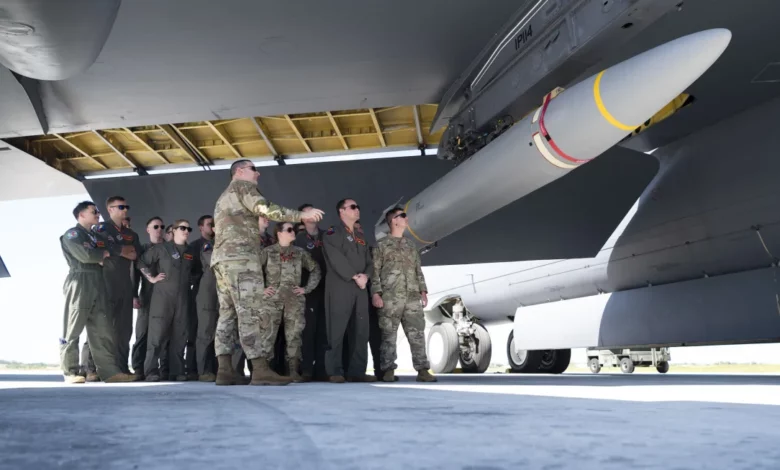
The US Air Force has tested a hypersonic cruise missile in the Pacific for the first time, in what analysts say is a signal to China that Washington still competes in a weapons arena where many perceive Beijing to have a distinct advantage.
On March 17, a B-52 bomber flying out of Andersen Air Force Base on the island of Guam fired “a full prototype operational hypersonic missile,” an Air Force spokesperson confirmed in a statement to CNN.
The test of the hypersonic weapon, officially called the All-Up-Round AGM-183A Air-launched Rapid Response Weapon (ARRW), was conducted at the Reagan Test Site on Kwajalein Atoll in the Marshall Islands, almost 1,600 miles (2,600 kilometers) to the east of Guam, the statement said.
Previous ARRW tests have been conducted off the US mainland.
The ARRW consists of a rocket booster motor and the hypersonic glide vehicle, which carries a conventional warhead.
It is “intended to attack high-value, time-sensitive, land-based targets,” a 2021 Defense Department document says.
Hypersonic glide vehicles travel at speeds greater than Mach 5, or approximately 4,000 miles per hour, making them difficult to detect and intercept in time. They can also maneuver and vary altitude, allowing them to evade current missile defense systems.
US officials have previously acknowledged that China and Russia have pulled ahead in the development of hypersonics.
China has been testing hypersonic glide vehicles that can carry both nuclear and conventional warheads since 2014, according to the Missile Defense Advocacy Alliance, a non-partisan lobbying group.
A US Air Force general said in 2021 that China had tested a hypersonic glide vehicle weapon that “went around the world,” while Russia fired a Zircon hypersonic cruise missile against Ukraine earlier this year, according to a Ukrainian government agency.
North Korea also claims to be developing hypersonic weapons. The state-run Korean Central News Agency said Wednesday that leader Kim Jong Un watched the test of a new engine for an intermediate-range hypersonic weapon on Tuesday.
Speculation that the US would test a hypersonic missile in the Pacific emerged in late February, when a B-52 carrying the weapon arrived on Guam for what a news release called “hypersonic weapon familiarization training.”
Analysts said before the test that its presence was intended to be seen in Beijing.
“This test is intended to send a clear message to Beijing, namely that Washington remains steadfast in reinforcing its strategic posture in the Pacific, even amidst competing global challenges,” said Craig Singleton, senior China fellow at the nonpartisan Foundation for Defense of Democracies.
“Of course, one US test won’t shift China’s hypersonic trajectory, nor will it resolve serious concerns regarding China’s perceived hypersonic edge,” Singleton said.
“But, it reaffirms that the US is not just an observer in the hypersonic domain, it’s a formidable player, and one committed to matching pace with China and Russia.”
The Air Force did not give any specifics on the test, such as how fast or how far the ARRW flew or whether it hit a target.
Rather, it said only that lessons were learned.
“The Air Force gained valuable insights into the capabilities of this new, cutting-edge technology,” the statement said.
It added that the trial “improved our test and evaluation capabilities for continued development of advanced hypersonic systems.” But the future for the ARRW model is uncertain, with Sunday’s test expected to be its last.
Last March, Air Force leaders told a congressional hearing that there were no plans to procure ARRWs for combat use.
The Air Force requested $150 million for ARRWs in fiscal year 2024; however, the National Defense Authorization Act did not authorize any funding for the program, according to a February report from the Congressional Research Service.
But Singleton said it may be too early to write off the ARRW.
“Signs suggest the Defense Department may be reconsidering its stance on the ARRW program, hinting at a potential revival in light of China and Russia’s hypersonic strides,” he said.
Air Force Lt. Gen. Dale White told the House Armed Service Committee last week that “future ARRW production decisions ‘are pending final analysis of all flight test data,’” according to a report in from Air and Space Forces magazine.
The last tests of the ARRW occurred in August and October of 2023, but the Air Force gave few details of what was accomplished. The first successful test of the system occurred in December 2022.




